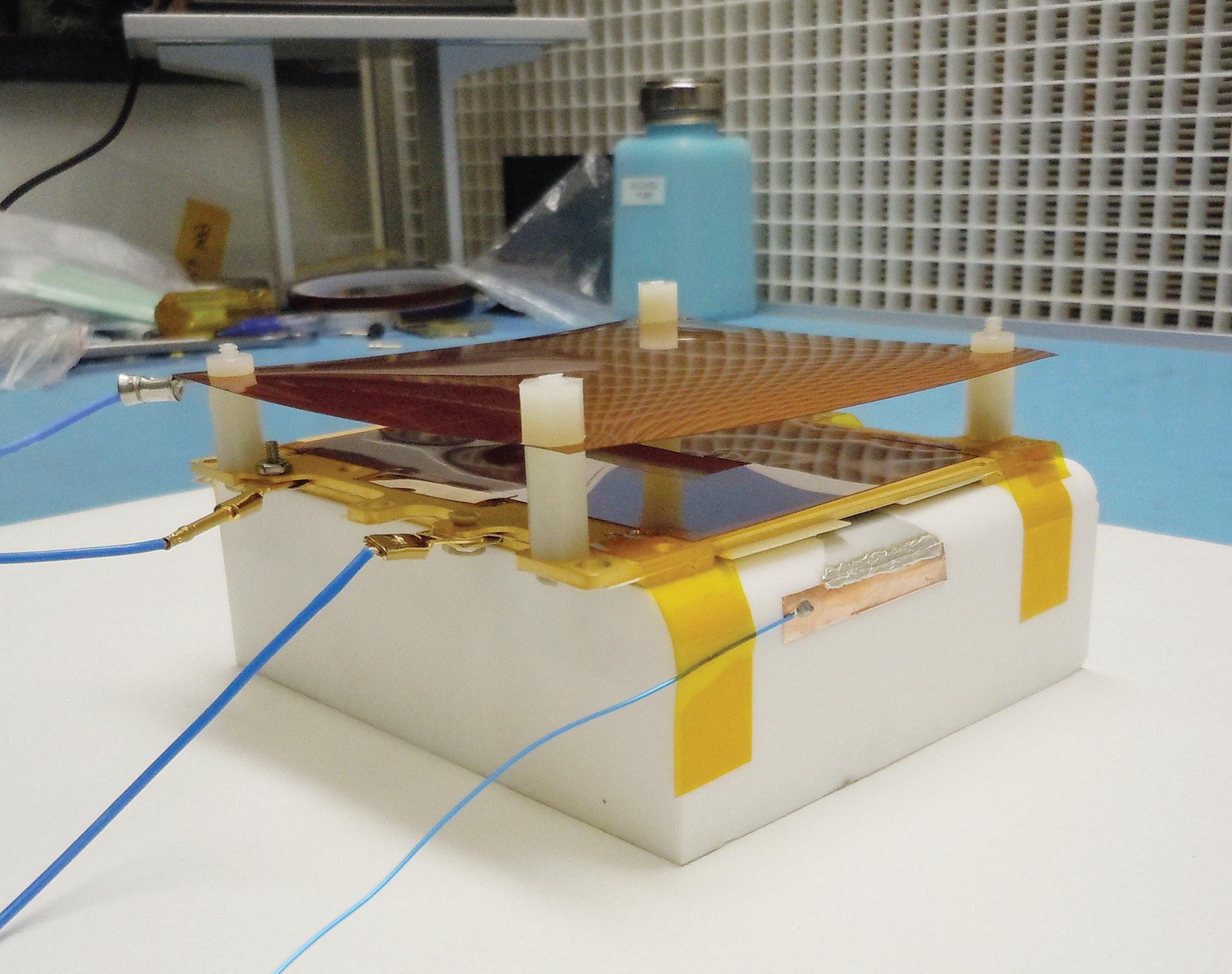
3 minute read
Catching up: 3D-Printed, Flexible Electronics Put to Work in X-ray Polarimeter
Goddard investigator Beth Paquette has been developing techniques and best practices for printing circuits and detectors on curved or flexible surfaces for a variety of projects. The technology can reduce the volume required for electronics in future spacecraft as NASA looks to send smaller instruments farther out into space.
Currently she is working with Margaret H. Samuels, a graduate student researcher, exploring ways to use Optomec’s 5-Axis aerosol jet printer to create the Readout Board Assemblies for a High-Energy X-Ray Photoelectric Polarimeter (HXPP). This instrument measures the polarization of radiation by tracking photoelectrons produced by X-rays. HXPP would detect X-rays by a change in the resistance on the 3D-printed lines.
Advertisement
“The traditional X-ray polarimeter assembly could be simplified, because right now they use a substrate that’s pretty flimsy and can tear easily,” said Beth Paquette, a NASA Goddard Space Flight Center technologist who started working with aerosol jet printing in 2014 (CuttingEdge Winter 2014, Page 3) and leads several Internal Research and Development (IRAD) projects focused on printed hybrid electronics.
Aerosol jet printing is an air-based 3D printing method in which gases regulate an ink stream made of metal nanoparticles suspended in a liquid. Traditionally, circuits are printed on boards by either depositing on or etching away layers of copper from the substrate and then adding components. These 2D circuit boards are assembled in a box when integrated into a spacecraft, occupying valuable space.
Additive manufacturing techniques, like the aerosol jet printer, can place traditional electrical components onto a surface and then print traces and connecting structures called interconnects to the circuit. HXPP’s X-ray detector is printed with silver ink over a ceramic substrate.

Printed traces around a 90-degree bend in a test configuration survived 40 hours of X-ray testing for a High-Energy X-Ray Photoelectric Polarimeter (HXPP) instrument project. Testing Traces printed are 45 microns wide with 120 micron spacing.
Photo credit: Beth Paquette
“An obvious perk for NASA engineers and scientists is being able to print a circuit on a curve,” said Margaret H. Samuels, a graduate student researcher working with Paquette. “This means you can print on the inside of a rocket, and you don’t have to take up extra space and mass of a whole printed circuit board.”
Samuels works with the 3D printers at the Laboratory for Physical Sciences (LPS), which partners with the University of Maryland. She is the principal investigator of a related IRAD project that generates software for printing HXPP assemblies.
Aerosol jet printing offers two main benefits: printing traces as small as 10 microns wide (a fraction of the thickness of a hair), which is 100 times smaller than current circuitry, and printing circuits directly onto 3D surfaces such as around a corner or on a dome.
Another application of the technology is a microcontroller circuit, which tracks basic electrical functions. The circuit will be printed on a waterproof section on the inside of a door on SubTEC-9, a sounding rocket demonstration set to launch in 2022. Temperature and humidity sensors developed by NASA’s Marshall Space Flight Center in Huntsville, Alabama, will collect data during flight to evaluate the circuit’s functioning.
Aerosol jet printing could aid development of the Next Generation Microshutter Array assemblies for spectrographs, as well as a housekeeping circuit demonstration to be tested on a future CubeSat, and superconducting circuits produced in extremely high temperatures. v
CONTACT
Beth.M.Paquette@NASA.gov or 301-286-8647

